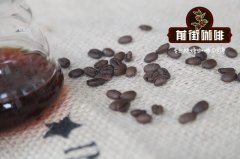Discussion on the main producing areas of Industrial planting Variety treatment of Mocha and Matali Mattari in Yemen

Professional coffee knowledge exchange more coffee bean information please follow the coffee workshop (Wechat official account cafe_style)
On Mocha and Matali Mattari in Yemen
[country Overview]
Yemen is located in the Middle East, bordering Saudi Arabia to the north, Oman to the east, the Red Sea to the west, the Arabian Sea to the south and the Gulf of Aden to the south. Yemen is still quite poor and receives assistance from IMF, and its main industries are still agriculture and animal husbandry.
[Overview of Coffee Industry]
In Yemen, by the Red Sea, it is the originator of the earliest coffee exported in the coffee-producing country, and the port of Mocha is its earliest port of export. Four hundred years ago, the early coffee planting in Yemen also surrounded the hills around the port. There are many names of the port of Mocha, including: Al-Makha, Al-Mocha, Al-Mokka, Mocha. Wait, this mysterious drink was discovered by Portuguese sailors who arrived at the port of Mocha in the 17 th century, and coffee has been introduced into Europe ever since.
At present, the export port of Yemeni coffee is Port of Aden (Aden) or Port of Holiday (Hodeida).
[varieties and planting methods]
Yemeni coffee is still planted in the same way as it was 500 years ago, with a variety of varieties and few records. It is recognized that there are adzuki bean Ismaili and ancient heirloom, as well as Adeni and Mattari species.
Planting method: almost all Yemeni coffee is planted on mountain slopes with an elevation of 3000ft to 7000ft above sea level, belonging to terraced alpine terraces. Because of low rainfall, coffee trees absorb water in a way similar to that of French grapevines, with strong vitality. They often have to rely on the strong water retention capacity of tree species to survive the dry period, and the dry and high temperature of air and soil also make the fruit look small and hard!
[Yemeni coffee handling]
Yemeni coffee is dried in the natural sun. Coffee fruits are directly dried in the courtyard or on the roof, but some coffee fruits are even directly air-dried on trees and then harvested (this method is called floating). This kind of stone mill is still dragged by animals, such as camels or donkeys, and camels have been an important animal husbandry industry for domestic and export in Yemen since ancient times. .
[selection and packaging]
The screening of Yemeni coffee after harvest is still manual, and only a few companies will use machines to select beans from better producing areas. There are two kinds of raw bean packaging, the general grade is packed in linen bags, and the top raw beans (such as Matali) will be packed in traditional straw bags, which are called Mats, which will be woven into a large bag to hold raw beans, while the exquisite ones will be subdivided into 6 small bags, each packed with local coarse cotton cloth, each containing 10 kg, and then put these 6 small bags into Mats, and then put them into gunny bags for export. So there are three layers of packing altogether.
[Yemeni famous coffee producing area]
Many of the coffee-growing areas in Yemen are often mentioned: Ahjeri,Anishi,Buraee,Haimi,Ismaeili,Mahweeti,Matari,Wosabi,Raimi,Safani,Udayni,Yafi
The main producing areas are:
Mattari (Matta Power)
Produced in the Bani Mattar district west of the capital Sana'a, it is the best coffee producing area for export in Yemen.
Hirazi,
Produced in the mountains from the capital Sana'a to the seaside, some people in Hirazi say this area is the best producing area for Yemenis.
Dhamari,
Produced in the southern mountains of the capital Sana'a, the flavor is milder than Mattari.
Ismaeili (Yisha charm)
This is the name of the producing area and is often the name of the bean, which means that when you buy the beans marked Ismaeli, you may buy the beans in the real Bani Ismaeli area, but it may also be a general name for the beans (the real Ismaeli is super small, similar to the peeled peas, and the color is white or not green.)
While the other market name is Sanani (Sanani)
In fact, it is not the name of the producing area, but mixed with beans from outside the capital to sell. This is because Matali Mattari and Sanani Sanani are the most famous of the top coffee sold in Yemen to Arabia and Europe a hundred years ago!
Related recommendation: what is mocha coffee? Yemeni mocha-Matali sun beans are the real mocha coffee beans in Yemen
Important Notice :
前街咖啡 FrontStreet Coffee has moved to new addredd:
FrontStreet Coffee Address: 315,Donghua East Road,GuangZhou
Tel:020 38364473
- Prev

Yemeni Coffee learn the historical story of Yemeni mocha coffee.
Professional barista communication please follow the coffee workshop (Wechat official account cafe_style) Yemeni coffee: when it comes to coffee, people think more of "refreshing". It is also for this reason that coffee has spread widely in Yemen. Between the 15th century and the 16th century, that is, during the Ming Dynasty in China, a famous hot drink became popular. It is said that an imam of Mocha in Yemen at that time and
- Next

Yemen Mocha Coffee Culture Introduction What are the characteristics of Mocha Coffee
Professional barista exchanges, please pay attention to coffee workshop (Weixin Official Accounts cafe_style) Yemen coffee: When it comes to coffee, people think more of "refreshing." Coffee spread to Yemen for this reason. Between the 15th and 16th centuries, during the Ming Dynasty in China, a famous hot drink became popular. It is said that an imam of Mocha in Yemen and
Related
- Beginners will see the "Coffee pull flower" guide!
- What is the difference between ice blog purified milk and ordinary milk coffee?
- Why is the Philippines the largest producer of crops in Liberia?
- For coffee extraction, should the fine powder be retained?
- How does extracted espresso fill pressed powder? How much strength does it take to press the powder?
- How to make jasmine cold extract coffee? Is the jasmine + latte good?
- Will this little toy really make the coffee taste better? How does Lily Drip affect coffee extraction?
- Will the action of slapping the filter cup also affect coffee extraction?
- What's the difference between powder-to-water ratio and powder-to-liquid ratio?
- What is the Ethiopian local species? What does it have to do with Heirloom native species?

